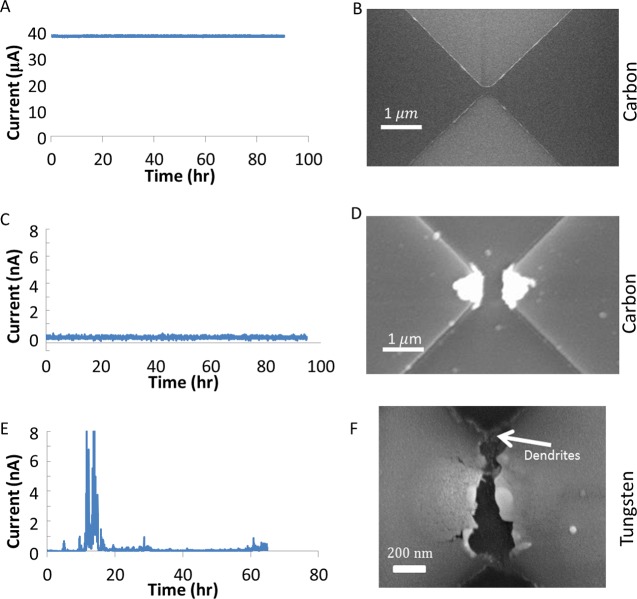Figure 6.
Programmed “on” (intact)- and “off” (blown)-state stability in carbon and tungsten fuses under an electrical load. (A, B) Programmed “on” state and (C, D) programmed “off” state for a carbon fuse. (E, F) Programmed “off” state for a tungsten metal fuse. (A) “On”-state stability for an intact fuse with 1 V applied for 90 h. (B) SEM image of the intact fuse after bias was held across it. (C) “Off”-state stability for a blown carbon fuse with a 10 V bias held over it for over 90 h, corresponding to a cumulative time of ∼1012 reads. (D) SEM image of a blown fuse after a 10 V bias was held across it. (E) “Off”-state stability for a blown tungsten metal fuse, with a 10 V bias across it showing unstable current due to dendrite formation. (F) SEM image of dendrite growth on the tungsten metal fuse after bias was applied.

